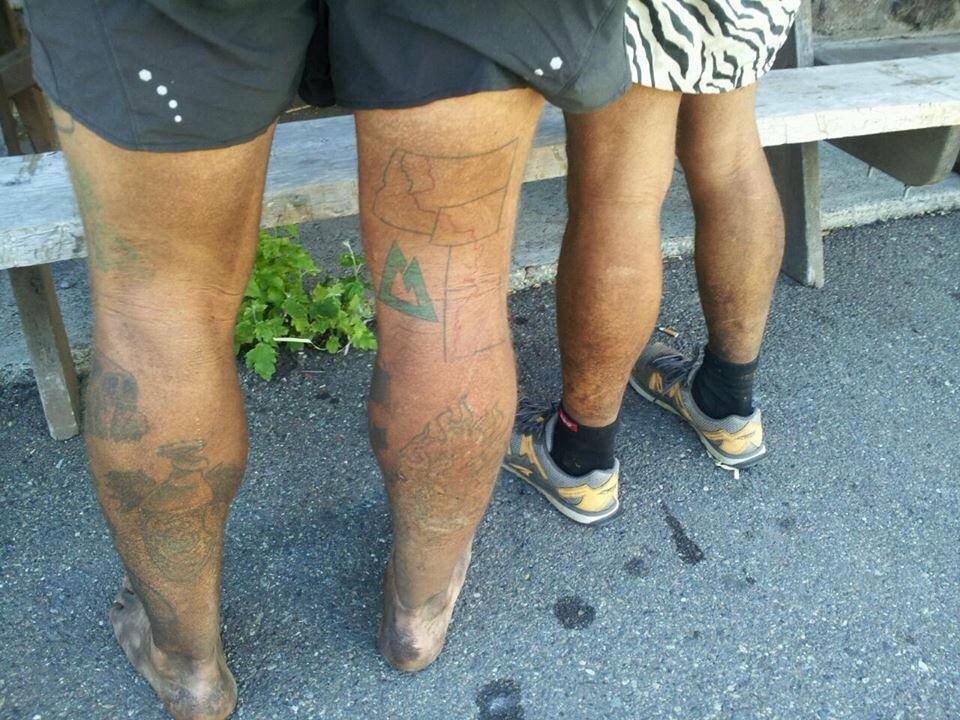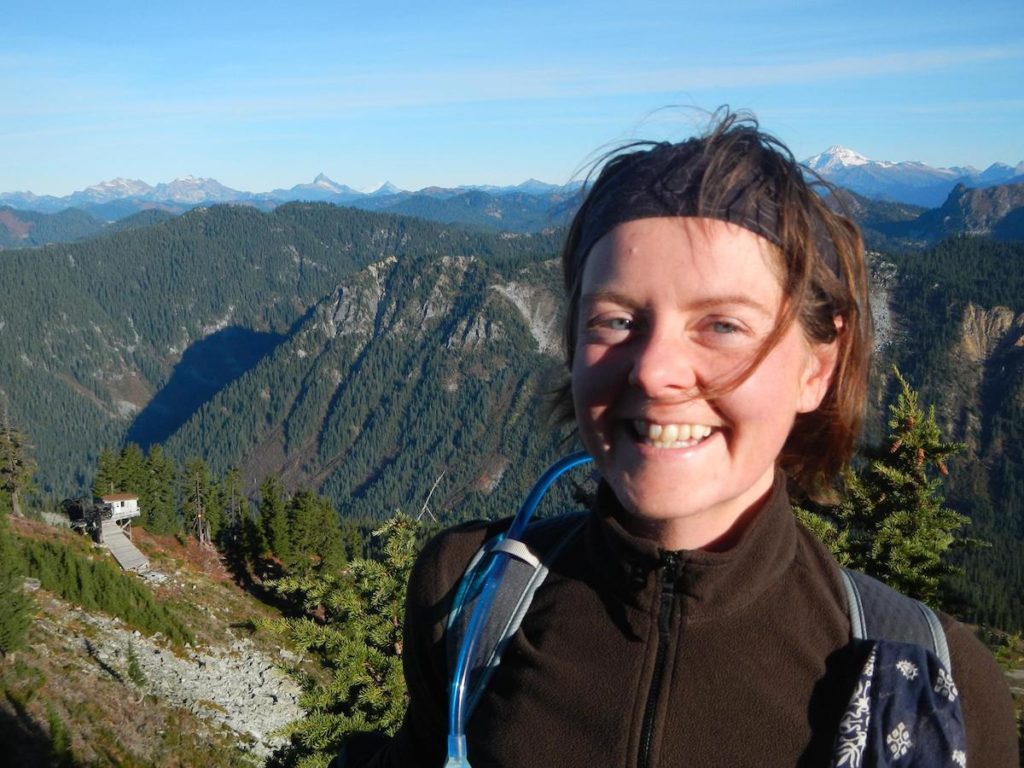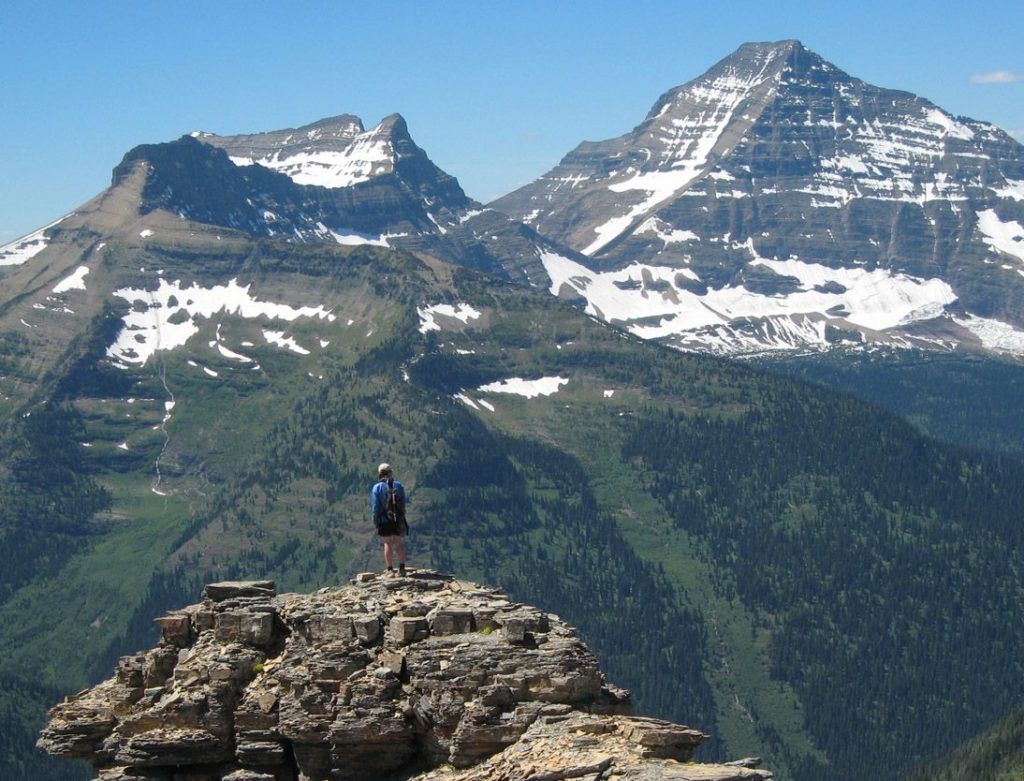Backpacking: days on end of sweating profusely carrying yourself and belongings over rough terrain without showering.
Or something like that.
I frequently field questions regarding trail hygiene, because, let’s face it. Being sweaty and dirty all the time isn’t particularly comfortable, or healthy. However, the level of cleanliness we often maintain in the front country (like daily showers and hair washing, hair removal, antiperspirants, etc.) can actually be just as unhealthy, but in different ways. So, the following tips are aimed at helping you develop a hygiene system on trail that will keep you healthy!
Embrace Dirt. Unless it’s in the wrong places (like an open wound) dirt itself isn’t that big of a deal. If you’re going to hike something like the Pacific Crest Trail I guarantee any bare leg will be coated with dirt at all times. Trying to keep it off is a guaranteed losing battle. The first step is accepting that you aren’t going to stay “clean.” Your clothes and bare skin are going to get dirty on a backpacking trip. If you don’t want dirt on your skin, cover it up. I wash up at night in camp so that my camp clothes—and therefore my sleeping bag—stay free of dirt accumulation. But, I don’t worry about the dirt during the day, or the dirt on my hiking clothes. If you choose to wash your clothes or body off in a backcountry water source, make sure to follow Leave No Trace ethics (no soap is very important!). More here on Leave No Trace.

Deal with Germs. Using hand sanitizer after using your cathole (check out the LNT principles for how and why to do this) is the key to keeping yourself (and others) from getting sick. Many hikers mistakenly think they contracted Giardia from backcountry water, when in fact it was likely something else—like Norovirus—contracted by fecal transmission from another person. Gross. If hand sanitizer doesn’t make you feel clean enough, use a tiny bit of eco-friendly soap, like Dr. Bronner’s, to wash your hands. Do this very far from backcountry water (which is where you should be anyway if you’re pooping).
The fact that many people get sick from other people doesn’t negate the fact that water-borne illnesses happen. Always treat your water with chemicals, filters, UV systems or by boiling. Use this clean water with a little soap or use sanitizer before you eat with your hands.
Keep the Vitals Fresh. I highly recommend daily cleaning of the vital areas of the body that produce the most sweat, harbor bacterial breeding grounds, and provide options for infection. This can be as simple as plain water, soap and water (again, far from water sources), or with wet wipes. Don’t use hand sanitizer or other antibacterial agents on these areas because the “good” skin bacteria that lives there and guards you against infection will also be killed.
These areas are:
- Armpits
- Groin
- Butt
- Feet
Additionally, wash any cuts and blisters and use antibiotic ointment on them to keep them from infection.
The backcountry bidet (basically a dedicated squirt bottle) is a popular option for avoiding the dreaded monkey butt and staying cleaner overall. Everything you need to know about this method and well-researched references to everything related to pooping in the woods can be found here.
Managing Menstruation. The most popular product in the backcountry for people who menstruate is a menstrual cup. I don’t have personal experience with one, but I know many who use and love them. The reality is that whatever method you are most comfortable with at home will work for you in the backcountry as well. Just make sure that you are using good hand and surface washing (away from water sources) when you’re changing products. If you use a menstrual cup, dig a shallow cathole to bury the contents. For all other products, pack them out. I recommend Mask-It odor-proof bags to do this job.

Buildup on Hair and Skin. Layers of sweat, dirt and sunscreen can be pretty hard on your skin. Days without washing can lead to scalp build-up and oily hair. The reality is that skin and hair types vary widely, so in the backcountry, you’ll need to develop your own mitigation strategies because there is no one size fits all solution. Some people carry special wipes for their faces if they have sensitive skin. Others use the same method they use for washing off their legs and arms. Hair and skin will both eventually adapt and produce less oils as the natural ones are being stripped away less often. This will take time and can be pretty uncomfortable until you get used to it. Many people shave their heads or crop close instead.
In the end, your hygiene system will be unique to you. The important thing is to follow LNT guidelines to protect nature and keep yourself healthy along the way.














